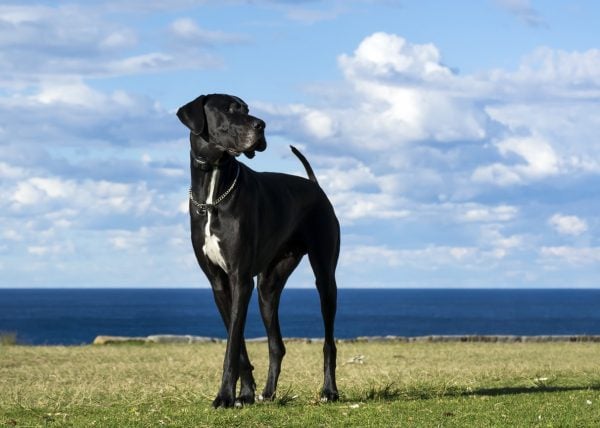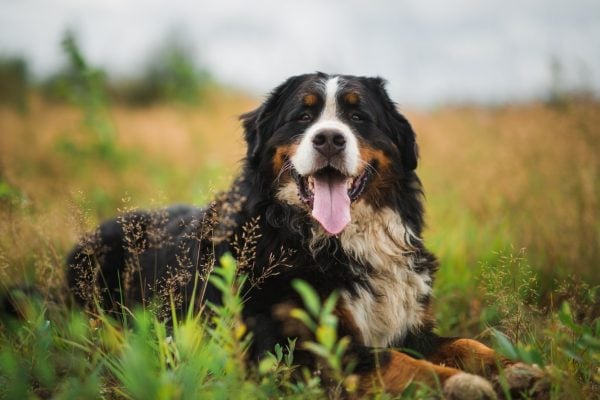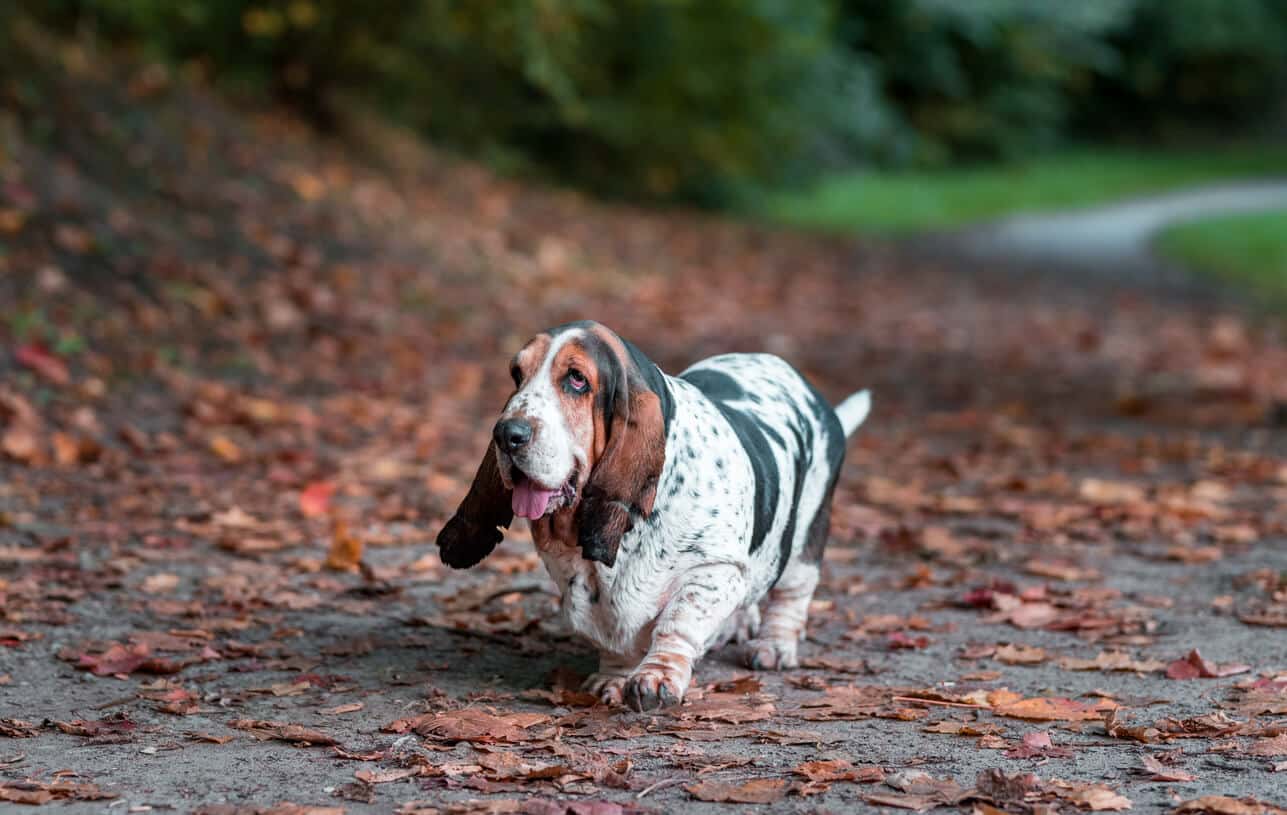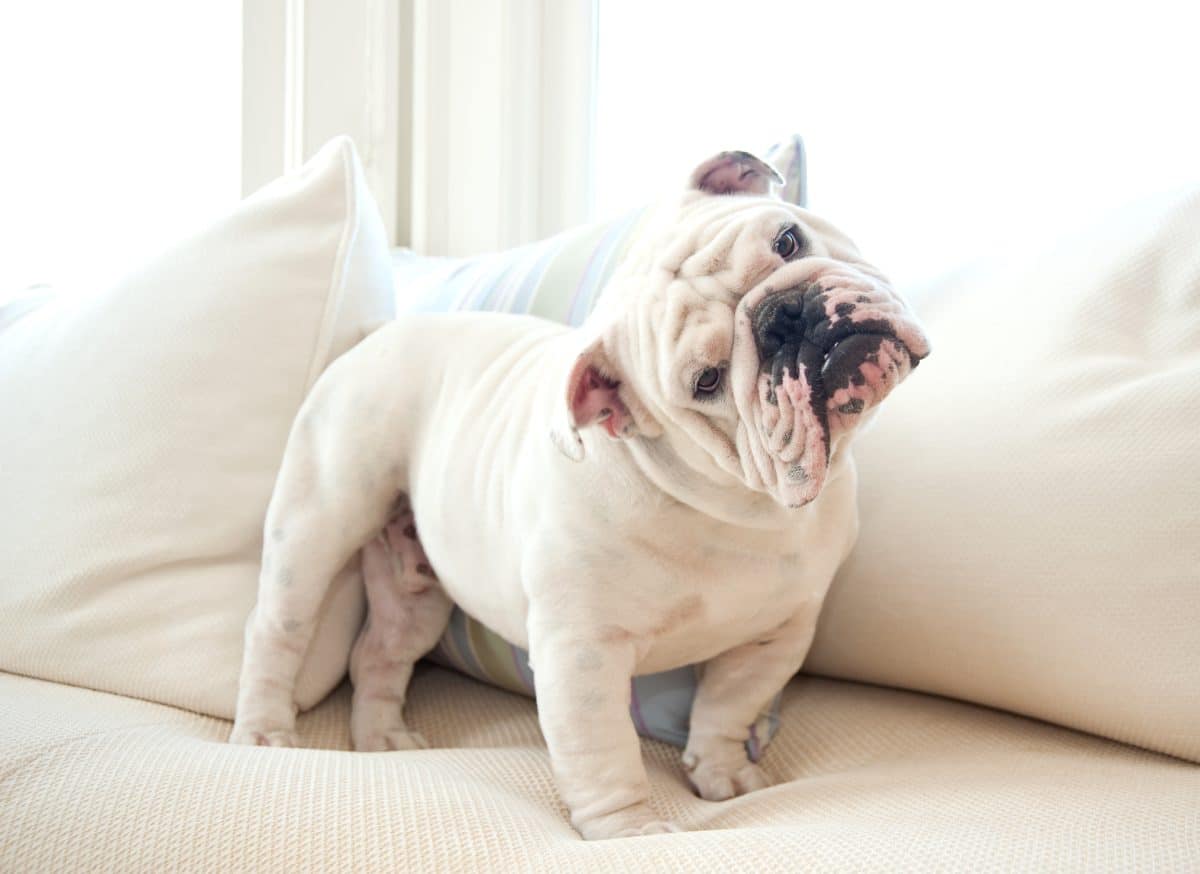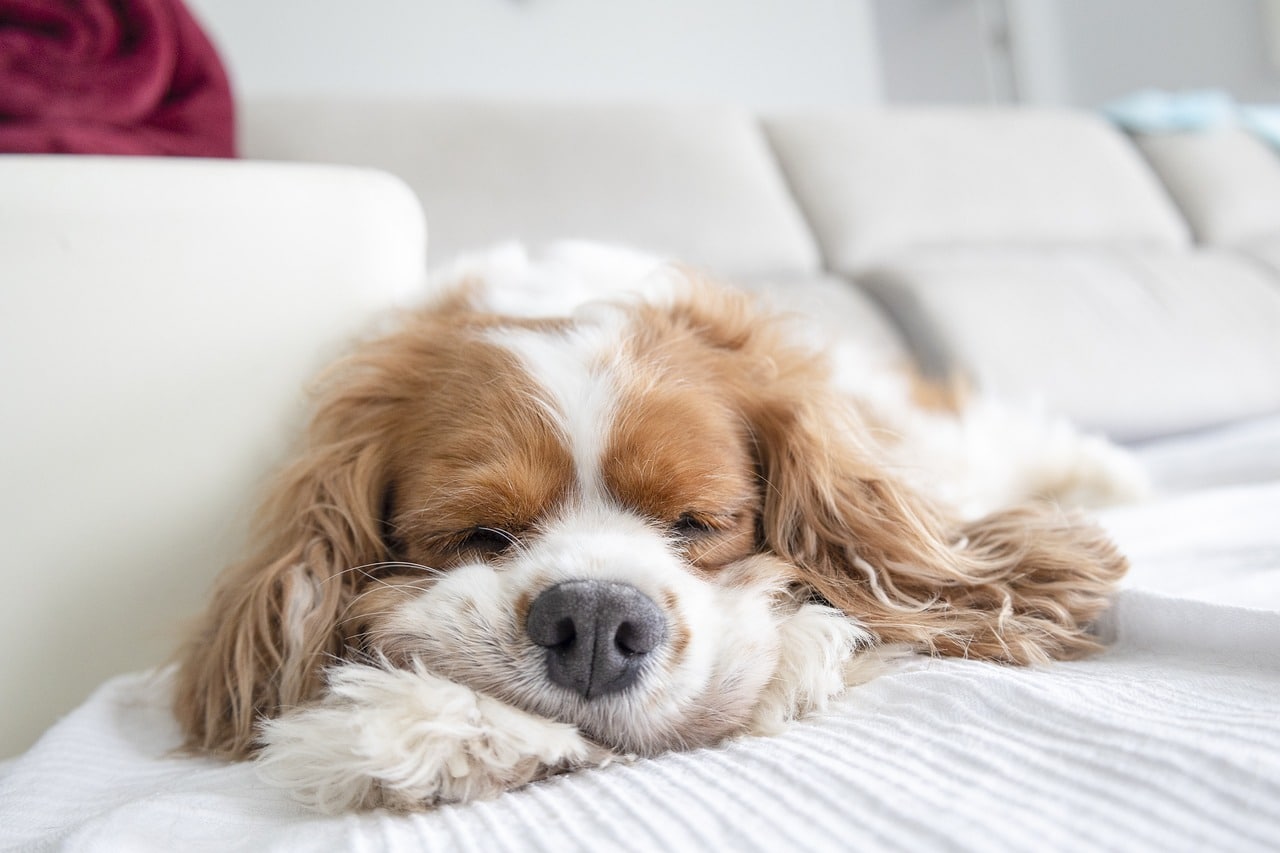- Not a substitute for professional veterinary help.
If you love dogs but also love a calm home, a chill dog might be a great match for you.
The calmest dog breeds tend to bark less, stay gentle around kids, and enjoy spending most of the day hanging out at home. So if you’ve got older pets, young kids, or prefer relaxing to running, you might want to find a calm dog—but it’s important to keep in mind breed isn’t the only factor to consider!
Even breeds known for their calmer natures can also show excitability, especially when they’re young, says Shannon Griffin, founder of Hound Therapy. She adds that training and socialization are also key steps to helping dogs stay calm as they get older.
Read on to discover 10 of the calmest dog breeds, according to experts. These breeds have a reputation for their laid-back natures, gentle personalities, and love of the easy life.
Newfoundland
Despite their large size, Newfoundlands tend to have extremely calm natures. In fact, they’re often called “nanny dogs.”
Sally Grottini, a dog behavior expert with JustAnswer, has had five Newfoundlands, who’ve always been calm and relaxed. “They have a sense of play when outside, but inside the house, they’re floor huggers.”
These gentle giants need about 30 minutes of exercise each day, and their chill personality makes them a great choice for families who want a dog that enjoys spending time with their people—as long as you can accommodate their size! Newfoundlands weigh between 100-150 pounds and stand 26-28 inches tall.
Saint Bernard
Saint Bernards are large, loyal, and pretty darn chill. This breed does have a playful streak, and they’ll enjoy up to 30 minutes of exercise each day.
In between walks and playtime, Grottini says they’re usually happy to relax in front of a fan on a cool floor. “I’ve found Saint Bernards to be very calm inside the house,” she says.
Another giant breed, Saint Bernards stand up to 30 inches tall and weigh 120-180 pounds. They have a long history as guide and guardian dogs, and they’re happiest watching over their families. This makes socialization training very important! That way, they’ll feel confident around new people and situations.
Great Dane
A Great Dane’s giant size can give them an imposing appearance, but don’t be fooled. They may weigh up to 175 pounds and stand up to 30 inches tall, but these dogs are extremely loving and laid-back.
Grottini says the Great Danes she’s looked after have been very calm. “They just find a bed and lie down,” she says.
They need at least 30 minutes of exercise each day and enjoy a blend of activities like gentle walks and off-leash playtime. At home, they adore spending time with their people, and they’ll often try to snuggle with you on the couch, despite their size!
Great Danes can live in larger apartments, but you’ll want to carefully dog-proof your home—they can easily knock things over.
Bernese Mountain Dog
This large breed has a reputation for their friendly, loving natures—and they also tend to be pretty calm. They also love spending time with children and will happily watch over them.
“These gentle giants are affectionate and easygoing, which makes them great family pets,” Griffin says.
Bernese Mountain Dogs can weigh between 70-115 pounds and stand up to 28 inches tall. They only need around 30-60 minutes of exercise per day, but as a working breed, they adore the challenge of training and learning new tricks.
Positive reinforcement training will help you build a strong bond with these sweet and gentle dogs.
Basset Hound
“This is the perfect dog for anyone who prefers a leisurely lifestyle,” says veterinarian Dr. Helle Branderup. Basset Hounds are relaxed and gentle dogs with low energy levels, she adds.
They should get up to an hour of exercise each day. As working dogs, they enjoy nosework, walks, and short training sessions.
While they love lazing around and taking long naps, Basset Hounds can easily become overweight if they don’t get enough gentle exercise. Ideally, these dogs should weigh around 40-65 pounds. They’re a medium-sized breed, but their short legs mean they only stand about 14-15 inches tall.
Greyhound
Greyhounds might be one of the fastest dog breeds out there, but Griffin says they’re couch potatoes at home, and they enjoy a good nap after a sprint.
“Greyhounds are very laid-back,” Dr. Branderup adds.
These dogs only need about 30-60 minutes of exercise each day. Ideally, this should include opportunities to run full-pelt, off-leash in a securely fenced enclosure—sometimes their prey drive can take over! After a good run, Greyhounds are happy to curl up and sleep for the rest of the day.
Greyhounds make a great choice for pet parents searching for an active yet calm companion. They’re also not too large for most homes. They stand 27-30 inches tall and can weigh between 50-70 pounds.
English Bulldog
The sweet and squashy English Bulldog is the definition of calm. They’re also a good size for most homes, since they stand up to 15 inches tall and usually weigh about 40-50 pounds.
“They might look grumpy, but don’t blame them for that! They are very gentle and calm, and they can be extremely lazy,” Dr. Branderup says.
In fact, you may need to make sure your Bulldog gets enough exercise to prevent excess weight gain. Usually, 30 minutes of exercise per day is more than enough. After a short training session or walk, most Bulldogs are more than happy to chill out and relax.
If you’re after a calm companion, they make a great option. Just keep in mind the English Bulldog’s short muzzle means they don’t do well in hot and humid conditions.
Cavalier King Charles Spaniel
With their velvety soft fur and soulful eyes, the Cavalier King Charles Spaniel is hard to resist.
“They’re known to be very affectionate and friendly dogs, but they’re also very calm and well behaved,” says Dr. Dwight Alleyne, DVM, a veterinarian with Betterpet.
These little dogs weigh about 13-18 pounds and stand 12-13 inches tall—the perfect size for snuggling up on your lap! They do enjoy spending time active outdoors, but about 30 minutes of exercise a day is enough for them. Just take care to keep these hunting dogs on a leash so they don’t run after an irresistible scent!
While Cavalier King Charles Spaniels are calm around their people, they don’t enjoy staying home alone.
Bichon Frise
The Bichon Frise is the perfect small, calm breed, Grottini says. “They’re happy to just lay at your feet or on your lap.”
They can weigh up to 18 pounds and usually stand just under 12 inches tall, so they won’t take up much space on your couch (or bed), either!
Grottini adds that while Bichons do enjoy plenty of downtime, they can occasionally get the zoomies. “Plenty of mind stimulation like puzzle toys can help with that,” she says.
These intelligent dogs also love the challenge of regular, short training sessions. And afterward, they’re generally happy to take a long nap or relax at home and watch the world outdoors.
Shih Tzu
The sweet and small Shih Tzu is a friendly breed with a calm nature. For centuries, these tiny dogs were adored by Chinese emperors, and they spent most of their days relaxing by their sides as faithful companions.
“They’re often quite relaxed and enjoy being pampered,” Griffin says.
Shih Tzus are small but sturdy, standing about 9-10 inches tall and weighing anywhere from 9-16 pounds. This breed typically loves children, so they can be a great choice for families. While they do enjoy short walks and training sessions, they’re happier relaxing indoors—preferably while their pet parents tend to their every need!
How To Find A Calm Dog
If you’re dreaming of a dog with more whoa than go, these expert tips can help you find one of the calmest dog breeds:
- Consider a senior dog: No breed is guaranteed to be completely calm, Dr. Alleyne says. If your number one priority is calmness, he recommends adopting an older dog with an established personality.
- Get to know the dog first: “Every dog has their own personality, which can vary greatly within a breed,” Dr. Branderup says, adding that spending time with them in person can help you decide whether they’ll make the right companion for your needs.
- Devote time to training: Griffin recommends sticking to a routine and providing your dog with plenty of mental stimulation. If they turn out more hyper than expected, positive reinforcement and consistent commands can make a big difference, she adds. Teaching commands like “settle” and incorporating calming activities like structured playtime and puzzle toys can also help.
Choosing a breed known for their chill and patient natures is a good start. But Griffin emphasizes that a dog’s environment, daily exercise, and training can greatly influence their calmness.
By taking the time to provide your dog with plenty of physical and mental stimulation, you can deepen your bond while also making sure that when it’s time to relax, they’re content to snuggle up and chill out.



